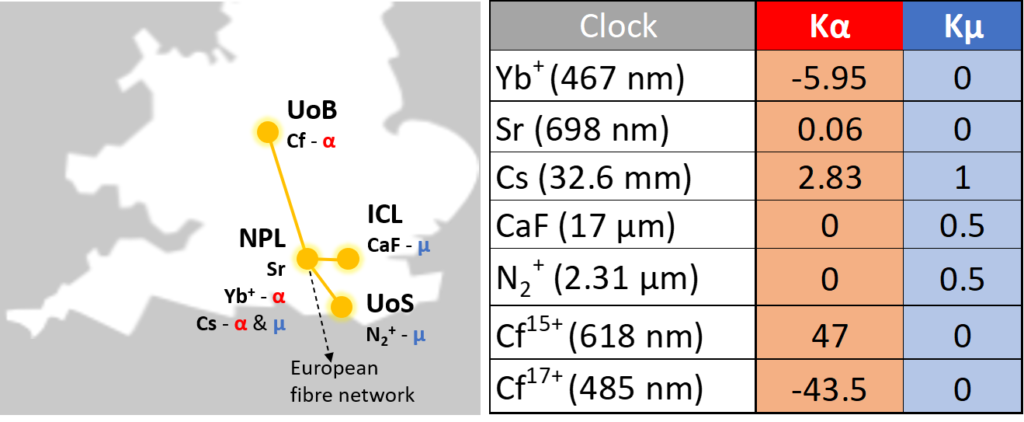About
We are creating an expandable network of innovative quantum sensors across the UK and with links into international networks. The sensors include atomic and molecular clocks and optical cavities.
Individually, these sensors allow searches for dark matter and dark energy, variations in fundamental constants, Lorentz symmetry breaking, new forces, tests of the equivalence principle, neutrino oscillations and quantum gravity. Collectively, the network will allow greater sensitivity and also enable detection of transient effects through correlations in the data from different locations.

As a large-scale collaborative project supported by the Strategic Priorities Fund, the network will enable world-leading physics measurements by bringing together expertise and linking existing investment in quantum technologies from the Midland Ultracold Atoms Research Centre (Birmingham & Nottingham), the Quantum Hub for Sensors and Metrology (Birmingham), the Gravitational Wave Institute and Particle Physics Groups (Birmingham), the Atomic, Molecular, Optical and Positron Physics Group (University College London), the Quantum Metrology Institute (National Physical Laboratory), the Sussex Centre for Quantum Technologies (Sussex) and the Centre for Cold Matter (Imperial College London). This world-class expertise is backed by substantial support from the UK theory community, provided by the Theoretical Particle Physics group (Sussex).
The unique breadth of expertise of QSNET therefore encompasses world-leading theoretical and experimental competences in Ultracold Atoms, Quantum Sensors, Quantum Metrology, Gravitational Waves and Particle Physics research. QSNET will provide access to cutting-edge quantum sensors for the entire UK community and has created substantial interest in international partners including from Europe, Canada and Australia. QSNET will be an internationally unique and world leading programme, the first worldwide to provide an integrated and networked approach using a range of different sensing modalities, which opens up completely new capabilities in cross-correlating different measurements for tests of fundamental physics.



